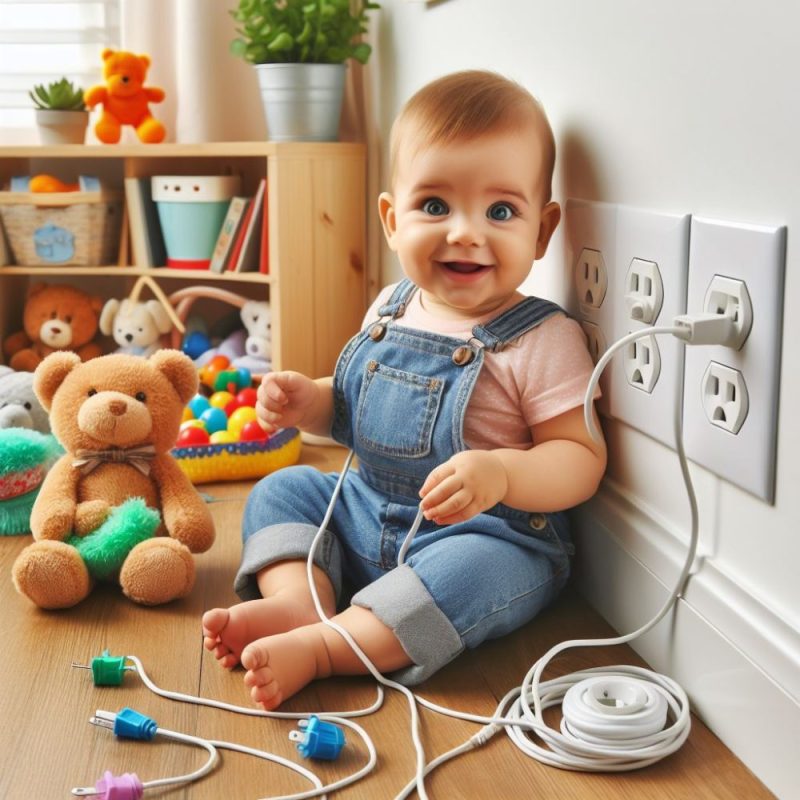Ensuring Safety from Electrical Hazards for Your Baby: A Comprehensive Guide
This comprehensive guide delves into the crucial aspects of ensuring safety from electrical hazards for your baby. From baby-proofing your home to identifying potential risks and taking preventive measures, this article offers valuable insights and practical advice to help parents create a safe environment for their little ones. Whether you’re a new parent or an experienced caregiver, this guide equips you with the knowledge and tools to safeguard your baby from electrical dangers.
Understanding Electrical Hazards in the Home
As a parent or caregiver, ensuring the safety of your baby is a top priority. One of the most significant potential dangers in any home is electrical hazards. From electrical outlets to cords and devices, various risks can pose a threat to babies and young children. Understanding these hazards and taking proactive measures to mitigate them is crucial for creating a safe environment for your little one.
Common electrical hazards in a home
Electrical hazards in a home can include exposed electrical outlets, frayed or damaged electrical cords, unsecured power strips, and accessible electrical devices such as lamps and appliances. These hazards can lead to electric shock, burns, or even more severe injuries if not addressed properly.
The potential risks to babies and young children
Babies and young children are naturally curious and often explore their surroundings by touching and putting objects in their mouths. This behavior puts them at a higher risk of coming into contact with electrical hazards, making them more vulnerable to accidents.
The importance of baby proofing for electrical safety
Baby-proofing your home for electrical safety is essential to prevent accidents and protect your baby from potential harm. By identifying and addressing electrical hazards, you can create a secure environment for your child to thrive in.
Baby Proofing Your Home for Electrical Safety
Identifying and covering electrical outlets
One of the first steps in baby-proofing your home is to cover all electrical outlets with safety plugs or outlet covers. These simple yet effective devices prevent babies from inserting objects into the outlets, reducing the risk of electric shock.
Securing electrical cords and cables
Keep electrical cords and cables out of your baby’s reach by securing them with cord organizers or using furniture to block access. Additionally, make sure to inspect cords regularly for any signs of defacement and replace them if necessary.
Using safety plugs and outlet covers
In addition to covering outlets, using safety plugs for unused outlets and outlet covers for frequently used ones adds an extra layer of protection against electrical hazards.
Keeping electrical devices out of reach
Place electrical devices such as lamps, chargers, and small appliances out of your baby’s reach. Consider using cord shorteners or wind-ups to keep cords tidy and out of sight.
Preventive Measures for Electrical Safety
Installing ground fault circuit interrupters (GFCIs)
GFCIs are designed to quickly shut off power when they detect a ground fault or electrical leakage. Install GFCIs in areas where water is present, such as kitchens, bathrooms, and outdoor outlets, to reduce the risk of electric shock.
Using tamper-resistant receptacles
Tamper-resistant receptacles have built-in safety features that prevent foreign objects from being inserted into the outlet slots, providing an added layer of protection for curious little fingers.
Ensuring proper maintenance of electrical systems
Regularly inspect and maintain your home’s electrical systems, including checking for loose outlets, frayed wires, and any signs of electrical problems. If you notice any issues, contact a qualified electrician to address them promptly.
Educating caregivers and family members about electrical safety
Ensure that anyone who cares for your baby is aware of electrical safety measures and understands the potential risks. Educate them on the importance of keeping electrical hazards at bay and how to respond in case of an emergency.
Responding to Electrical Accidents
Knowing the signs of electrical shock in babies
It’s essential to be able to recognize the signs of electrical shock in babies, which may include burns, difficulty breathing, or loss of consciousness. If you suspect that your baby has experienced an electrical shock, seek medical help immediately.
Immediate actions to take in case of an electrical accident
If an electrical accident occurs, such as a baby coming into contact with a live electrical source, it’s crucial to act quickly. Turn off the power source if possible and carefully remove the baby from the electrical source using a non-conductive object.
Seeking medical attention for electrical injuries
Even if the baby appears unharmed, it’s important to seek medical attention after an electrical accident to ensure that there are no internal injuries or complications.
Conclusion
In conclusion, ensuring safety from electrical hazards for your baby is a critical aspect of creating a secure home environment. By understanding the potential risks, baby-proofing your home, taking preventive measures, and knowing how to respond to electrical accidents, you can significantly reduce the likelihood of electrical injuries to your baby.
As a final tip, remember to stay vigilant about electrical hazards and regularly reassess your home for any new risks. By staying proactive and informed, you can provide a safe and nurturing space for your baby to grow and thrive.
Remember, the safety of your baby is paramount, and taking the necessary steps to protect them from electrical dangers is a responsibility that should not be taken lightly. With the right knowledge and tools, you can ensure that your baby is safe from electrical hazards in your home.







